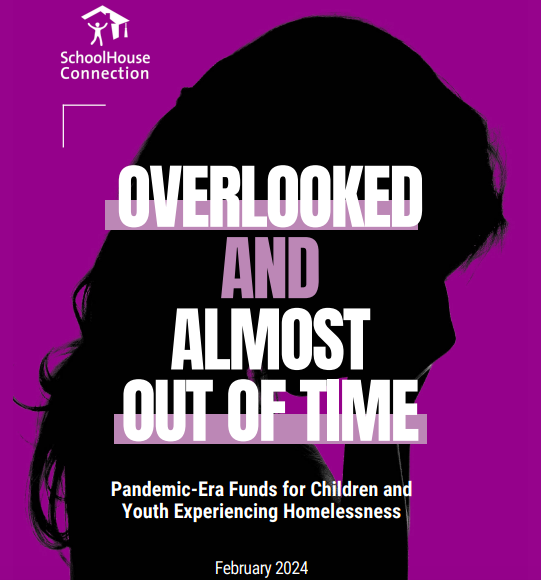Qustodio today released their 5th Annual Report, offering valuable insights into children’s digital habits across 2023. “Born connected: The rise of the AI generation”, reveals the app use and technology habits of children aged 4-18, detailing trends in screen time, social media and communications, mobile gaming, online entertainment, learning tools, and for the first time in the report’s history, use of artificial intelligence tools.
Qustodio’s report, involving over 400,000 families and schools, studies the popularity of apps and platforms used by children around the world, with further insights into habits in major world markets, including the US, UK, France, Spain, and Australia. In addition to revealing children’s favorite apps and platforms of 2023, the study also investigates the time invested over the year, detailing children’s screen time on popular apps such as TikTok, YouTube, Roblox, and Snapchat.
The extensive report also features surveys and interviews with families actively involved in their children’s digital wellbeing, giving insight into how parents and guardians navigate parenting in an increasingly online world and the tools they use to keep their children safe as technology, the internet, and artificial intelligence evolve at a rapid pace.
Some of the key findings from 2023’s report include:
- TikTok continued to captivate with children spending a global average of 112 minutes daily on the app – up from 107 in 2022. UK kids were particularly fond of the bottomless scroll as they racked up 127 mins/day.
- Although YouTube is still the world’s top streaming app, children spent 60% more time on TikTok.
- Children watched 27% more video content in 2023 than in the previous year – hitting a world average of 57 minutes per day.
- Despite a tumultuous 2023 – and a name change – Twitter/X saw a 27% boost in popularity among children.
- Gaming took a dip in 2023 with children spending 8% less time on mobile games than in 2022. Despite this, Roblox is where children spent the most time – across all app categories – with a global average of 130 minutes invested daily.
- Although WhatsApp remains the king of communication apps, kids spent the most time on Snapchat with a world average of 74 mins/day.
- Australian kids led the way with AI experimentation with 24% using OpenAI – compared with a global average of 19.6%
“This year has been yet another of innovation and exploring new horizons, as families learn to adapt to new AI technologies and the changing landscape of social media,” says Eduardo Cruz, Qustodio CEO and co-founder. “The next few years will be a chance for parents, educators, and children to come together and understand how we strike a healthy digital balance, reaping the rewards technology brings while also keeping the youngest in society safe from online harm.”
To see the full report on children’s digital habits across 2023, and how they have evolved since 2019, visit the Qustodio website.
CTL, a global cloud computing solution leader for education and enterprise, released its annual predictions today. Based on trends observed in its markets, CTL executives provided an advanced look at what to expect in 2024 for Chromebook and ChromeOS device technologies and market trends.

“Recently, the leaders at CTL got together to discuss the top trends we’re experiencing and excited about as we transition to 2024. We’ve published a few of our top opinions of what we see as new and next for Chromebook cloud computing. It’s going to be a great year,” said Erik Stromquist, CEO of CTL.
The predictions addressed in CTL’s article include:
- Chromebook technology-based trends
- Sustainability concerns will drive innovations in Chromebook manufacturing and deployment, including designing for sustainability, enabling device self-repair programs, innovative device rental programs, and suppliers conforming to manufacturers’ sustainability requirements.
- New 5G capabilities will come online, bringing easier, faster, anywhere, anytime connectivity to computing devices for K-12 and other industries like healthcare as they begin to augment traditional wireless solutions and help bridge the digital divide.
- New tools are needed in cybersecurity to fight AI attacks with AI protection.
- ChromeOS EdTech market trends
- Schools will replace their aging fleet of Chromebooks this year to future-proof their tech to offer the performance required to leverage new toolsets like generative AI.
- Schools will extend their ChromeOS devices to teachers, staff, and administrators, taking advantage of their investment in Google Workspace and leveraging the anticipated new power of Chromebook Plus.
- Funding for student Chromebooks will get creative with city-district partnerships, innovative leasing programs, and other post-pandemic funding models.
- Chromebooks will be increasingly adopted worldwide in 2024, with new markets coming online with government tenders in Asia, Latin America, and Africa.
Complete predictions, including details and executive quotes, are available in the article “CTL’s Chromebook and ChromeOS Trends for 2024” on CTL’s website.
This week, national non-profit SchoolHouse Connection released “Overlooked and Almost Out of Time,” a report showing the impact and reach of pandemic-era relief funds for students experiencing homelessness, as well as the challenges that are preventing schools from using these funds at a time of heightened need.

Congress provided the funds, known as the American Rescue Plan – Homeless Children and Youth (ARP-HCY) funds, through a bipartisan amendment to the American Rescue Plan Act, in March 2021. ARP-HCY funds must be obligated by September 2024.
“ARP-HCY funds are changing lives – even saving lives. But the limited timeframe for using the funds, combined with administrative restrictions, have created barriers to using funds. Now time is running out,” said Barbara Duffield, Executive Director of SchoolHouse Connection. “Urgent action is needed so that we don’t miss this historic opportunity to help students break the cycle of homelessness through education. We urge Congress to extend the ARP-HCY obligation deadline for one more year, and we implore all education agencies to prioritize ARP-HCY funds.”
The report is based on a survey of more than 1,400 school district homeless liaisons from across all 50 states and the District of Columbia, as well as on analyses of federal data. The report found:
- Child and youth homelessness has increased since the pandemic, creating a greater need for targeted support for students experiencing homelessness.
- The number of school districts receiving dedicated funding to support students experiencing homelessness has more than doubled as a result of ARP-HCY funding, reaching over half of all school districts nationwide.
- School district homeless liaisons report many positive impacts of ARP-HCY funds, including increased school stability, identification, and attendance.
Still, despite these positive impacts, the report found:
- One quarter of school district homeless liaisons express concerns about meeting spending deadlines due to administrative hurdles and limited time. An additional 25% of liaisons were unaware they received ARP-HCY funds, potentially making it difficult to meet spending deadlines.
- Even though liaisons are legally responsible for identifying and supporting students experiencing homelessness, they are often excluded from key decisions about use of funding.
- Public schools are a critical source of help for children and youth experiencing homelessness, offering stability, services, and the education necessary to permanently escape homelessness and secure a brighter future. Yet homelessness creates barriers to education – many of which can be directly removed with ARP-HCY funds (for example, transportation, store cards to meet basic needs, and short-term emergency motel stays).
In addition to administrative barriers getting in the way of effectively using ARP-HCY funds, educational agencies have prioritized spending the $122 billion in ARP Elementary and Secondary School Emergency Relief funds at the expense of a focus on ARP-HCY dollars. SchoolHouse Connection’s analysis shows that states have spent ARP ESSER nearly 50% faster than ARP-HCY funds, despite the fact that ARP-HCY funds are less than 1% of ARP ESSER funds.
The report lays out recommendations for Congress, the U.S. Department of Education, state and local education leaders, and state legislatures. “While the pandemic is officially over, the crisis of homelessness is unabated and growing. Leadership and action is needed at every level — federal, state, and local – to ensure that these funds are used effectively now and sustained into the future,” Duffield said.
A link to the report, including methodology, can be found here.
- Meet the Winners—Dr. Kellie Wilks, Chief Technology Officer, of Ector County Independent School District, TX (ECISD) - April 12, 2024
- Meet the Winners—Prince William County Public Schools (PWCS) in Manassas, Virginia wins the 2024 Community Leadership Award for Digital Equity. - April 12, 2024
- #CoSN2024 Conversation – Tom Ryan Co-Founder K-12 Strategic Technology Advisor Group (NM) - April 10, 2024

